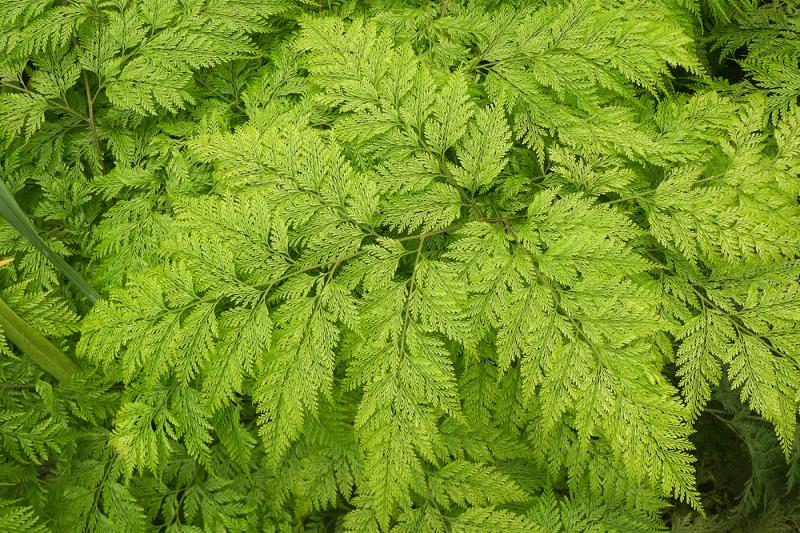Grow a rabbit foot fern for good luck and fuzzy fun
I wonder if the winner of the $2 billion lottery prize clutched a rabbit foot for luck when buying the winning ticket. The idea of a rabbit’s foot connection with good luck goes back thousands of years.
Carrying this charm or talisman is supposed to bring the rabbit's agility to dart swiftly out of danger, along with the rabbit's infamous fertility.
Rabbit's feet are also considered lucky when associated with the dead body of a criminal – the more wicked the criminal, the more powerful the charm.
It is said that during his election campaign, Grover Cleveland carried a rabbit foot from an animal killed on the grave of outlaw Jesse James.
Luckily, we can enjoy a rabbit foot all year without outlaws or killings. It’s the rabbit foot fern (Davallia solida var. fejeensis), named for the furry rhizomes growing on top of the soil that look and feel just like a rabbit’s foot. These rhizomes absorb moisture and nutrients. The plant’s dark-green, 6-inch-long triangular fronds are finely divided giving it a light, lacy effect.
These plants are originally from the shady forests of Fiji, so keep them out of hot, direct sunlight, such as south-facing windows. Rabbit’s foot ferns grow best in bright but not direct sunlight, so a window that faces east is ideal. They like daytime temperatures between 70 and 75 degrees, with slightly cooler night temperatures.
They grow wonderfully in kitchens and bathrooms where naturally higher humidity will keep them at their best. They’re also easier to grow indoors than many ferns because they will tolerate lower humidity. Avoid placing them near drafts or heaters.
Rabbit foot fern does well in hanging baskets, where the fuzzy rhizomes spill over the sides. Water just enough to keep the soil moist but not soggy. Let the top 1/2 inch of soil dry out between waterings. You can cut back slightly on watering during fall and winter when the plant is not growing very fast.
Use potting soil mixed with sand, peat moss or perlite for better drainage. Soil with a neutral pH of 6.6 to 7.5 is best. Because of their small roots, a wide but shallow pot is ideal. A daily misting will keep the furry rhizomes from drying out. You can feed rabbit’s foot fern with a good indoor liquid houseplant fertilizer mixed at half strength. They are fine being a bit rootbound, although you may want to repot them every few years. It is best to do this in the spring before the growing season.
Spring is also a good time to divide large ferns. You can easily propagate rabbit foot ferns by taking tip cuttings of the rhizomes. Make each cutting 2 to 3 inches long, being sure that there are one or two fronds attached. Place the cuttings on top of the soil and pin them down so they make contact with the dirt. The rabbit foot fern is not toxic, so it’s safe around pets and children.
Grow a rabbit foot fern and enjoy the comical, fuzzy rhizomes and lacy foliage. Even if you don't win the lottery or the presidential election like Grover Cleveland, you will have an easy-to-grow, healthy houseplant. Lucky you.


















































